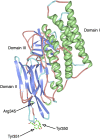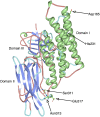Biotechnological prospects for engineering insect-resistant plants
- PMID: 18316644
- PMCID: PMC2259060
- DOI: 10.1104/pp.107.111096
Biotechnological prospects for engineering insect-resistant plants
Figures


References
-
- Baum JA, Bogaert T, Clinton W, Heck GR, Feldmann P, Ilagan O, Johnson S, Plaetinck G, Munyikwa T, Pleau M, et al (2007) Control of coleopteran insect pests through RNA interference. Nat Biotechnol 25 1322–1326 - PubMed
-
- Bohorova N, Frutos R, Royer M, Estanol P, Pacheco M, Rascon Q, McLean S, Hoisington D (2001) Novel synthetic Bacillus thuringiensis cry1B gene and the cry1B-cry1Ab translational fusion confer resistance to southwestern corn borer, sugarcane borer and fall armyworm in transgenic tropical maize. Theor Appl Genet 103 817–826
Publication types
MeSH terms
Substances
Grants and funding
LinkOut - more resources
Full Text Sources
Other Literature Sources

